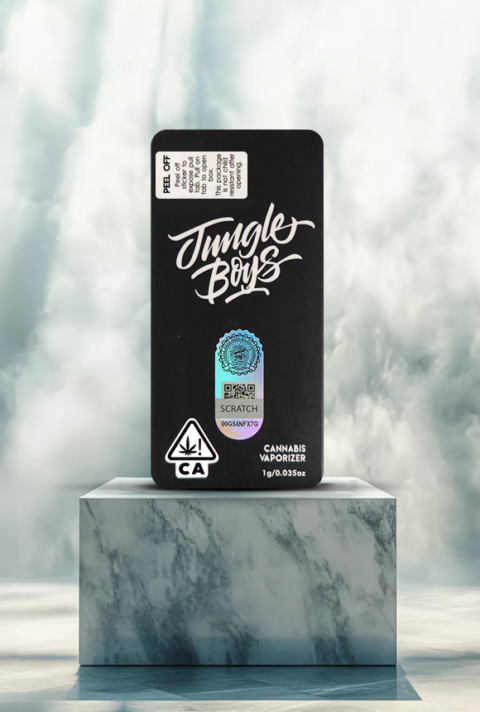Confidential Information On Cry Baby Vape That Only The Experts Know E…
페이지 정보
작성자 Isabell 댓글 0건 조회 6회 작성일 25-08-25 15:07필드값 출력
본문
 Therefore a man who has wisdom enough to fill one office successfully, good conduct sufficient to impress one neighborhood, virtue sufficient to please one ruler, or expertise enough to be referred to as into service in a single state, has the identical type of self-pleasure as these little creatures. US Environmental Protection Agency (EPA) regulations require farmers who plant Bt corn to plant non-Bt corn nearby (called a refuge), with the logic that pests will infest the non-Bt corn and thus will not evolve a resistance to the Bt toxin. In 2013 Monsanto launched the first transgenic drought tolerance trait in a line of corn hybrids referred to as DroughtGard. The EPA permitted a decrease percentage of refuge seed in these seed mixtures starting from 5 to 10 (speaking of)%. This strategy is likely to reduce the probability of Bt-resistance occurring for corn rootworm, but might increase the risk of resistance for lepidopteran pests, comparable to European corn borer.
Therefore a man who has wisdom enough to fill one office successfully, good conduct sufficient to impress one neighborhood, virtue sufficient to please one ruler, or expertise enough to be referred to as into service in a single state, has the identical type of self-pleasure as these little creatures. US Environmental Protection Agency (EPA) regulations require farmers who plant Bt corn to plant non-Bt corn nearby (called a refuge), with the logic that pests will infest the non-Bt corn and thus will not evolve a resistance to the Bt toxin. In 2013 Monsanto launched the first transgenic drought tolerance trait in a line of corn hybrids referred to as DroughtGard. The EPA permitted a decrease percentage of refuge seed in these seed mixtures starting from 5 to 10 (speaking of)%. This strategy is likely to reduce the probability of Bt-resistance occurring for corn rootworm, but might increase the risk of resistance for lepidopteran pests, comparable to European corn borer.
Seed baggage containing both Bt and refuge seed have been authorised by the EPA within the United States. These seed mixtures have been marketed as "Refuge in a Bag" (RIB) to extend farmer compliance with refuge necessities and cut back extra work needed at planting from having separate Bt and refuge seed bags readily available. Increased issues for resistance with seed mixtures embody partially resistant larvae on a Bt plant being ready to move to a prone plant to survive or cross pollination of refuge pollen on to Bt plants that may lower the quantity of Bt expressed in kernels for ear feeding insects. GM crops provide a lot of ecological benefits, but there are additionally considerations for their overuse, stalled research exterior of the Bt seed industry, proper administration and points with Bt resistance arising from their misuse. FSANZ company revealed a comment mentioning quite a few inconsistencies in the paper, most notably that it "doesn't provide any proof that GM foods are the source of the protein". Nonetheless, members of the public are a lot much less probably than scientists to perceive GM foods as secure. The authorized and regulatory standing of GM foods varies by country, with some nations banning or limiting them, and others permitting them with broadly differing levels of regulation.
Regulation of GM crops varies between nations, crybaby pen with a few of essentially the most-marked differences occurring between the US and Europe. The first era of GM crops lose patent safety starting in 2015. Monsanto has claimed it is not going to pursue farmers who retain seeds of off-patent varieties. She ultimately finally ends up possessing Rarity when the Nightmare Forces persuade her that her buddies will finally abandon her. This text will information you thru the essential requirements you need to consider before taking that first puff. The toxin assaults the nervous system and can kill an grownup at a dose of round seventy five ng. Growth of the bacterium can be prevented by high acidity, excessive ratio of dissolved sugar, high ranges of oxygen, very low ranges of moisture, or storage at temperatures beneath 3 °C (38 °F) for type A. For instance, in a low-acid, canned vegetable equivalent to green beans that aren't heated sufficient to kill the spores (i.e., a pressurized setting) might provide an oxygen-free medium for the spores to develop and produce the toxin. A 2011 Canadian research appeared on the presence of CryAb1 protein (BT toxin) in non-pregnant women, pregnant women and fetal blood. A 1999 study discovered that in a lab environment, pollen from Bt maize dusted onto milkweed could harm the monarch butterfly.
 A examine of these experiences found that from 2003 to 2005 farmer compliance with conserving refuges was above 90%, however that by 2008 approximately 25% of Bt corn farmers did not keep refuges properly, raising issues that resistance would develop. A 2005 giant-scale study failed to search out any evidence of contamination in Oaxaca. A 2004 study found Bt protein in kernels of refuge corn. However, different authors additionally discovered evidence of cross-breeding between pure maize and transgenic maize. Nature later acknowledged, "the proof accessible isn't sufficient to justify the publication of the original paper". The data in this paper was later described as originating from an artifact. The paper did not discuss safety implications or discover any health problems. Critics have objected to GM crops on ecological, economic and well being grounds.
A examine of these experiences found that from 2003 to 2005 farmer compliance with conserving refuges was above 90%, however that by 2008 approximately 25% of Bt corn farmers did not keep refuges properly, raising issues that resistance would develop. A 2005 giant-scale study failed to search out any evidence of contamination in Oaxaca. A 2004 study found Bt protein in kernels of refuge corn. However, different authors additionally discovered evidence of cross-breeding between pure maize and transgenic maize. Nature later acknowledged, "the proof accessible isn't sufficient to justify the publication of the original paper". The data in this paper was later described as originating from an artifact. The paper did not discuss safety implications or discover any health problems. Critics have objected to GM crops on ecological, economic and well being grounds.





